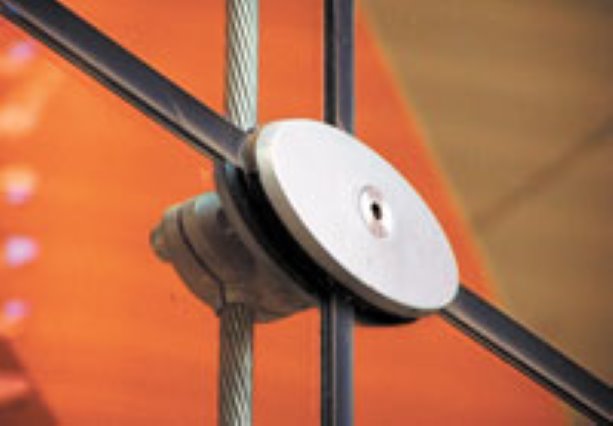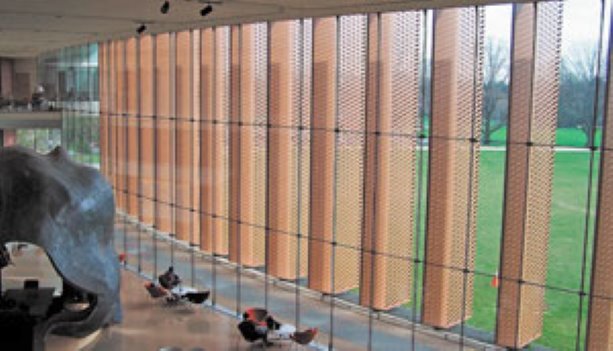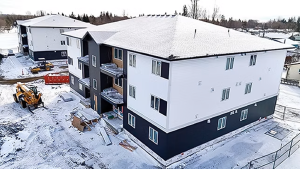Cable net walls are deceptively simple structures that employ tensioned steel cables as the primary structural element. The cables are arranged in a grid, then fastened with clamps or “nodes” where the cables cross.
Design
Cable net walls are deceptively simple structures that employ tensioned steel cables as the primary structural element. The cables are arranged in a grid, then fastened with clamps or “nodes” where the cables cross.
Glass plates are fitted to the openings in the grid using the nodes as fasteners. When the joints of the glass plate are aligned to the cables, the structure appears nearly transparent.
The first application of the cable net wall was in the Kempinski Hotel built in Munich in 1993. While cable net walls aren’t yet popular in Canada, they are seen in such high-profile North American projects as the AOL Time Warner Building in New York, and The Securities & Exchange Commission headquarters in Washington, DC.
Cable net technology can be used to create both walls and roofs, either in rectilinear or curved shapes. One of the objections to using the technology in Canada, is a fear that snow loads will overwhelm the structures.
“Most cable nets are walls,” says Kieran Kelly-Sneed, professional engineer with ASI Advanced Structures Inc. in Los Angeles. “But if they were used as a roof, snow load would have little to do with it. You design for the loads that you anticipate. A cable net structure in Washington, DC would certainly anticipate some sort of snow load.”
The glass panels used in cable net walls also operate with the traditional insulating values associated with laminated or insulated glass panels in colder climates.
Kelly-Sneed says that the cost of cable net technology increases with the size of the surface to be covered, so cost comparisons with more traditional walls are difficult. “You pay more for a lot of transparency,” he says. “For a 40-foot span, a cable net system would probably cost about one-and-a-half to two times as much as one built with heavy steel trusses.”
Sylvie Boulanger, executive director, Quebec Region of the Canadian Institute of Steel Construction, says presentations on the technology usually have Canadian architects and engineers champing at the bit to get started. Cable net wall contracts are usually arranged as design-build, because nodes and cables are specialty items.
The nodes themselves are usually an important design component in cable net wall systems.
“The wall designer will want to create something unique to the project,” says Kelly-Sneed. “When you’re ordering a couple of hundred of them it doesn’t cost that much more to customize them.”
“You can’t order a kit from Canadian Tire,” says Boulanger. “They are highly personalized to the project. Many architects are very excited by these structures, engineers are warming up to them, manufacturers are starting to adapt their pricing and specialty erectors are emerging.
It will just take a slight cultural shift before we see such projects built here.”

A small, elegant casting is the only visible structure from the exterior, because the cable that carries the glass load lines up with the glazing between the giant glass panes.











Recent Comments
comments for this post are closed